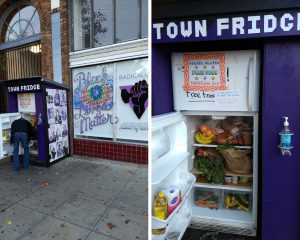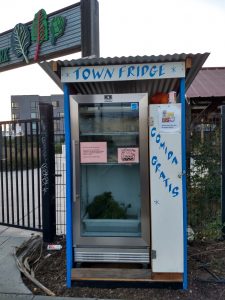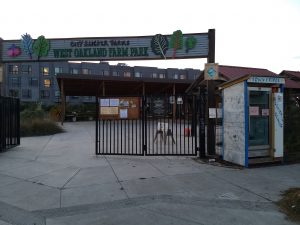Community Refrigerators
During a phone call with my mom the other day, she told me about how she’s just finished culinary school and is working on starting a catering business. With her six-figure salary and new career ventures, it feels like a different reality than when we were on food stamps. I remember feeling embarrassed to use our SNAP card in ShopRite and pretending to be engrossed in the selection of gums and soap gossip as the cashier rang us up. I know it’s cringey, but I have learned and grown as I hope everyone has the opportunity to do. I also remember the outpouring of kindness from our neighbors during that time, like the grocery gift card left anonymously in our mailbox, tucked into a greeting card with kind words my mother needed to hear. As the clock counts down on my unemployment eligibility, I find myself reminiscing and asking myself: How did she do it? How did she take care of me and my siblings with empty pockets and full bills? I don’t remember much from that time, but I know she wasn’t alone.

Next to a thrift store in the Third Ward in Houston, Texas there is a bright blue fridge with “gratis comida” written in graffiti style lettering on the front. It’s just one of many grassroots initiatives to install community fridges around the country and the world. As unemployment skyrockets during the pandemic, so has food insecurity, and these community fridges have gained traction as a way to support local communities by providing free food.
Increased Need in LGBTQ+ Community
Food insecurity has always disproportionately affected the LGBTQ+ community. A study published by the Williams Institute of UCLA reported that “more than 25% of LGBT adults (about 2.2 million people) did not have enough money for food for themselves or their families […] compared to 17% of non-LGBT adults.” The gap widens when taking into account ethnic disparities, with some minority groups reporting over 40%.
The pandemic has accelerated these concerns, as soup kitchens and food bank programs have seen an overwhelming increase in demand. For example, in New York people have to line up hours before the kitchen opens, and food banks have waitlists. Feeding America reports that 58 million people, 18 million of which are children, will experience food insecurity during the COVID pandemic. This interactive map details the rates of overall food insecurity in the US.
What Is A Community Fridge?

The popularization of this modern form of food activism can be traced back to the UK and Germany, where in 2017 organizations like “The People’s Fridge” and “Foodsharing” set out to tackle food waste and feed those in need. According to the United Nations, roughly one third of the food produced in the world for human consumption every year — approximately 1.3 billion tons — goes to waste. Commercial refrigerators were set up in business districts where restaurants, grocery stores, and passersby were encouraged to donate produce and pre-cooked foods, and those who need are encouraged to take at zero cost.
The trend has caught on here in the United States. Homemade food, produce from local urban gardens, and even medications can be found in community fridges in Oakland, Houston, Chicago, and New York. Many of these fridges are maintained not by large organizations but by a few people looking to make an impact. Like my neighbor when I was young, these people saw a need and reached out to the community to address it. From start to finish, community fridges are a group effort: some community members install the fridge, others maintain it, and local businesses partner with the community to power the fridges. There is a lesson here in accountability and the sustaining power of a united community.
The anonymity and lack of centralized leadership associated with community fridges has caused concern for local health officials who struggle to classify the food safety standards these fridges are beholden to. In Berlin, one of the early adopters of community fridges, the fridges were legally considered vending machines which placed limits on produce, milk, and anything uncooked. In the U.S., organizers are attempting to put safety precautions in place such as prohibiting meat products and requiring expiration dates on food.
Where Can I Find FREE Food?

Stocked with fresh produce from local gardens, would-be food waste from local restaurants, and even medications, these fridges are a wonderful resource for those struggling, which if we are honest, right now is most of us.
If you would like to know if there is a fridge near you, visit Instagram and search “community fridge”; you can also visit https://freedge.org/ or this international spreadsheet and remember, “Take what you need and leave what you don’t.”

Leave A Comment